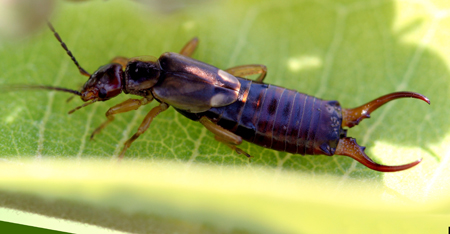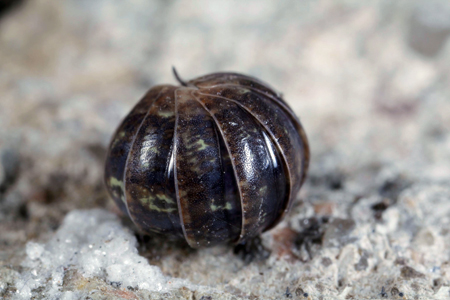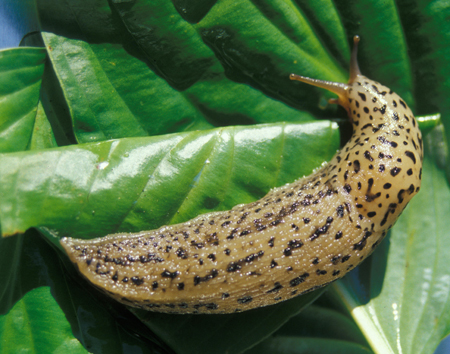Slog of wet weather brings on garden pests
It seems like the rain gage just keeps filling up. Garden plants love it, but pests like earwigs, pillbugs and slugs, do, too.
During cool, wet weather, slugs, pillbugs and earwigs gain momentum in the ideal conditions that exist not only in the organic debris around your garden plants, but lots of other places as well. Perusing through the garden I have found slugs on plants where I was least expecting them, such as Allium. An onion relative, Allium was not a plant I would think would be preferred food for this pest. Other plants like Hosta, Pulmonaria and soft-tissue annuals are prime targets for hungry slugs.

Earwig. Photo credit: David Cappaert, MSU, Bugwood.org
Earwigs and pillbugs are serious plant eaters, too. Years ago, I remember telling people that earwigs posed no threat to the garden and were merely enjoying a good romp in the wood chips. Tell that to my coleus and marigolds, would ya! According to MSU entomologist David Smitley, European earwigs and pillbugs can be a big nuisance around homes, hiding out in moist shrub beds or leaf litter. Pillbugs also will flourish in flower beds where there is surface debris or mulch.


Left, pillbug. Right, rolled-up pillbug. Photo credit: Joseph Berger, Bugwood.org
Since earwigs feed mostly when gardeners are sleeping, they are not easily observed, Smitley noted. A common symptom is the tattered foliage of soft annuals such as sweet potato vine, marigold and coleus. Even containerized flowers and hanging baskets can be a target. Earwigs stealthily slither under the pots during the day then munch their salad bar all night. I have curtailed their feeding on container plants simply by placing pots on “feet” to separate the moist bottom from the patio surface where earwigs hide.
Instead of using chemical insecticides, Smitley suggests focusing your efforts for control on reducing favorable earwig and pillbug habitat. Think about confining mulch to areas to plant material that is least susceptible. Chemical controls are also available, but he says it may take several applications to get satisfactory results, not to mention once a perennial looks bad, you are stuck with it all season. Always remember to read a product label carefully before applying.
Escar-GO-AWAY
In my opinion, slugs are equally annoying. We are sure to have a bumper crop of slugs this year due to the cool weather and ample moisture we’ve been having. This is the time of year you start to see dozens of holes in leaves that you didn’t notice before. Slug’s diets consist of anything from Hosta to Pulmonaria. Sometimes they will munch on tender annuals, too. One difference between slug damage and earwig damage is slugs leave a shiny slime trail.

Giant garden slug.
Management of slugs can be complicated and usually involves a combination of strategies. As mentioned before, reducing their habitat will help a lot. For example, I switched my perennial mulch from coarse wood chips to fine-ground bark and reduced slug damage significantly.
Hand picking, trapping with pit fall traps, wet newspapers or other ways would be the most environmentally sensitive, non-chemical way to control. Chemical molluscicides and baits are available, but have limited effectiveness and will need to be repeated. Ohio State University reports that baits commonly used disintegrate quickly after rainfall or irrigation. Again, slugs tend to be night feeders and gardeners will be best able to observe them on a dewy early-morning.
Avoid watering annuals and perennials late in the day, which creates a perfect environment for them to slide around all evening. Drip irrigation is the best method as it concentrates the moisture right where needed.
Fall garden clean up will also help reduce slugs the following year. I commonly find slugs nestled down in the petiole of my Hosta leaves as I am cutting them back each fall.
Find out about other educational resources and classes at www.migarden.msu.edu and at Finneran’s blog. You can contact the MSU Master Gardener Lawn and Garden Hotline at 616-336-3881 with your questions.



 Print
Print Email
Email




